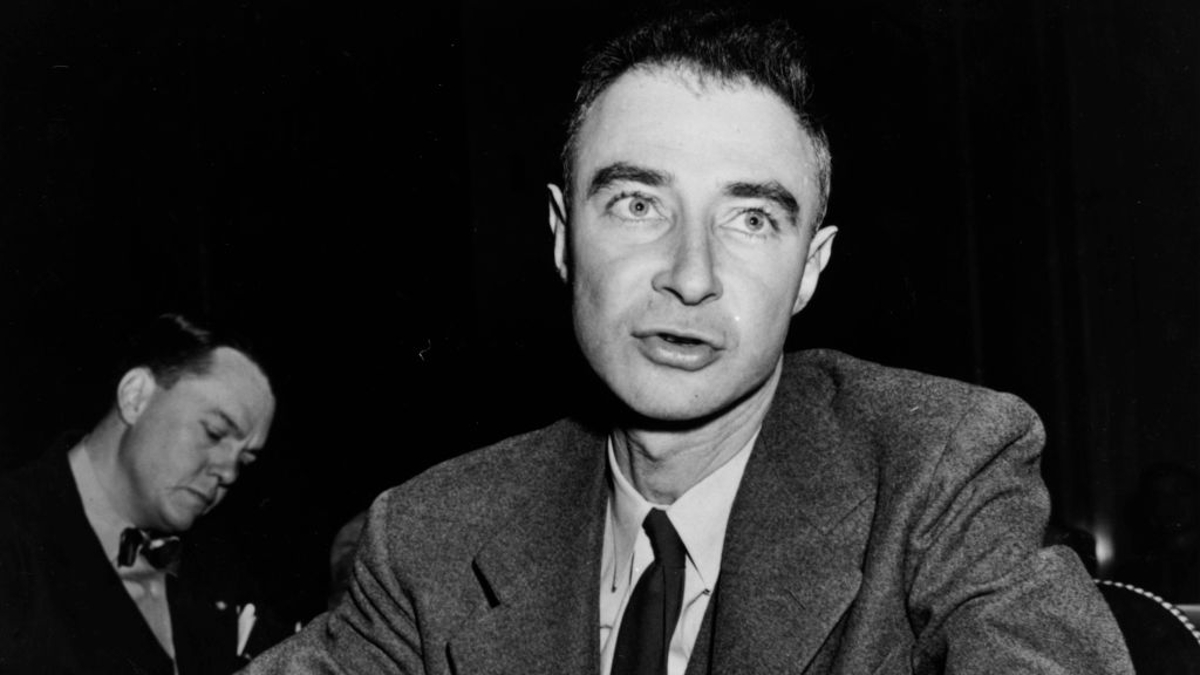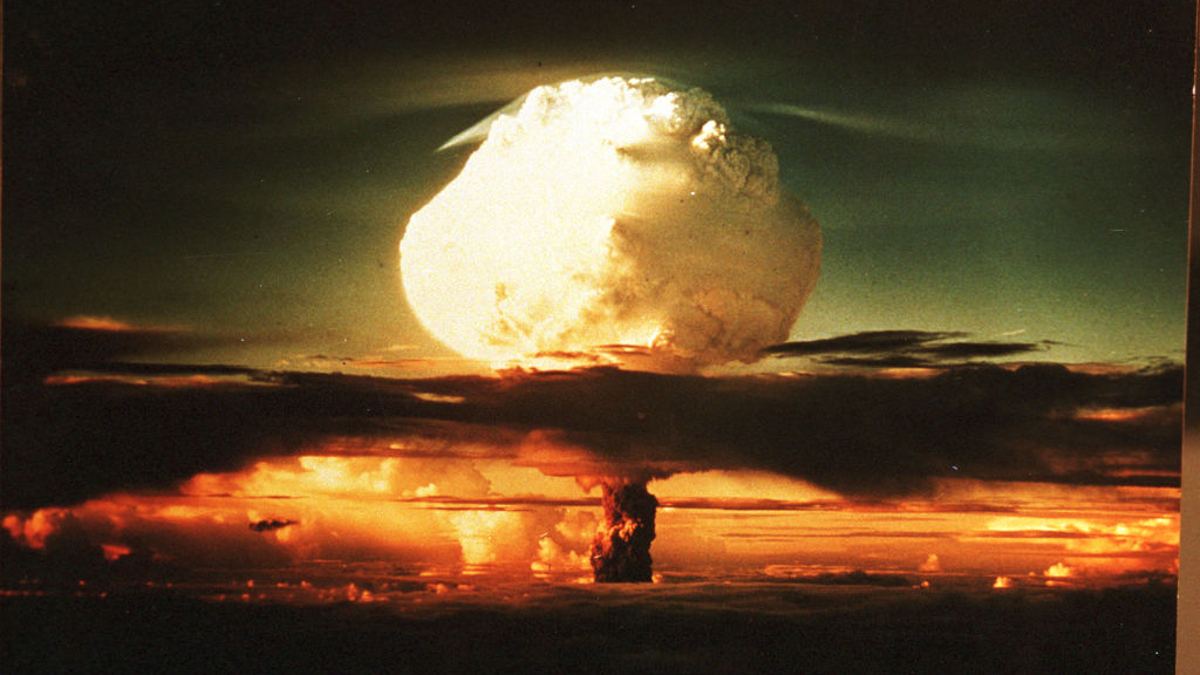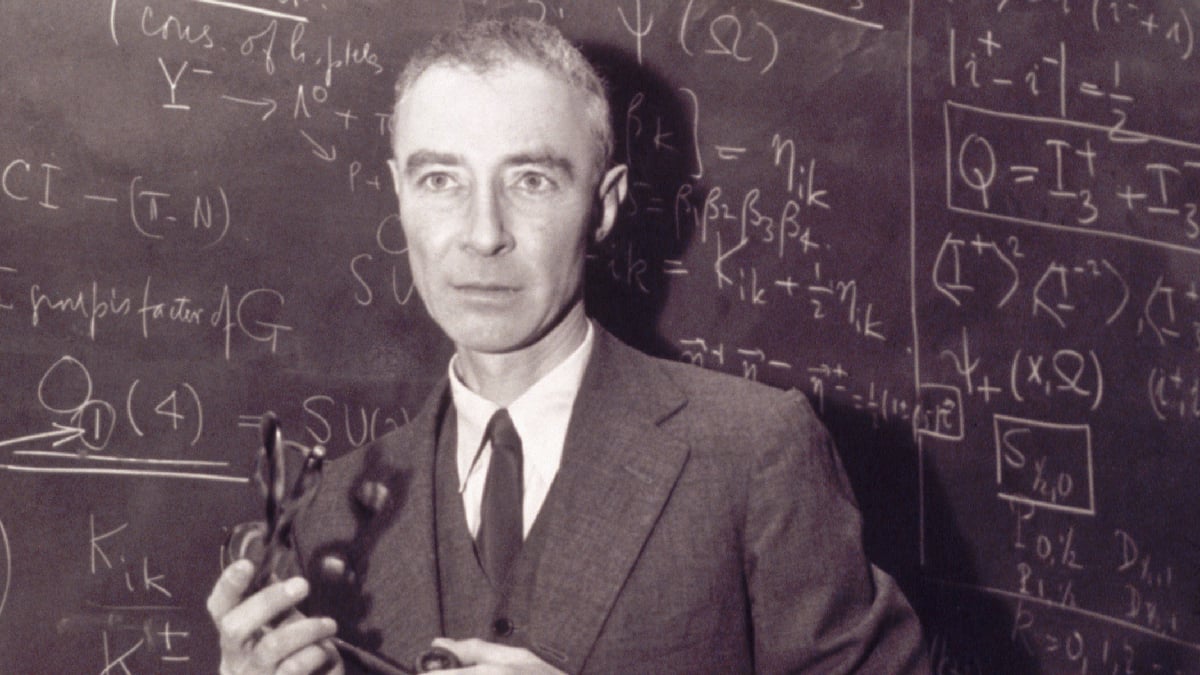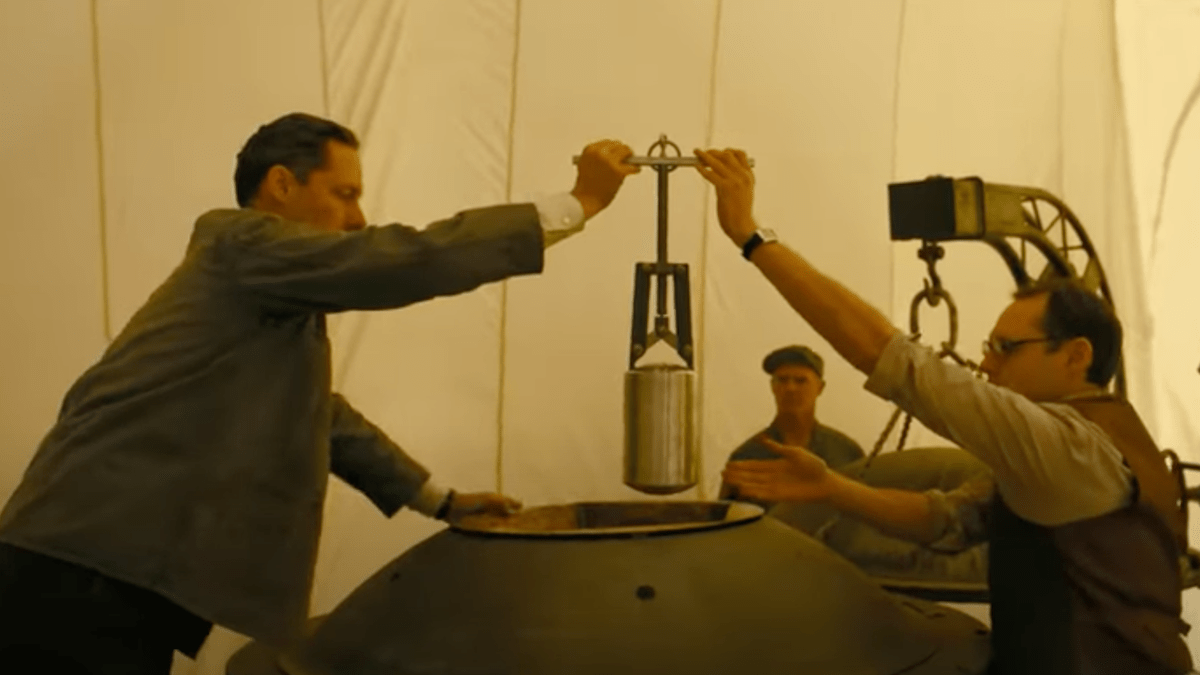Despite being one of the most meticulously recorded scientific events in recent human history, many aspects of the creation of the nuclear bomb remain a mystery. Christopher Nolan‘s new biopic Oppenheimer — based on the life of the eponymous physicist widely considered to be the father of the bomb — seeks to delve into some of these questions that aren’t so much rooted in science, but psychology instead.
J. Robert Oppenheimer was a fascinating character (he’d have to be to justify a film with a three-hour runtime). Although he was politically to the left, and deeply into spiritualism, at his heart he was a genius scientist, linguist, and historian. So, why did a man who donated to left-wing causes and was intensely well-read in Hindu philosophy decide to try and make a weapon so destructive and new that some thought it might ignite the atmosphere and destroy the whole world? Was it the specter of Nazism? A scientific interest taken too far? Or a combination of factors? Read ahead to find out just why Oppenheimer joined the Manhattan Project.
Who was J. Robert Oppenheimer?

J. Robert Oppenheimer was a brilliant theoretical physicist, polygot, and lecturer. He was born in New York City in 1904 to wealthy German-Jewish immigrants, and his scientific genius was obvious from an incredibly young age — so much so that he impressed members of the New York Mineralogical Club enough that they invited him to deliver a lecture at the tender age of 12.
He then studied chemistry at Harvard, but after graduating top of his class decided to switch to physics. He ended up at Cambridge University in the U.K., where he worked under a Nobel prize winner and began his research into atoms. Soon he was in Germany at the University of Göttingen, where he’d been invited to do some research by the influential director of the Institute of Theoretical Physics – Max Born. During this time he published a number of well-received and influential papers that contributed heavily to the new field of quantum theory.
By 1927 Oppenheimer had received a doctorate and became a professor in California. By his own admission, he wasn’t too involved in the world of politics, focusing more on his work. During this period he was nominated for a Nobel Prize three times, although never won one. His research continued to contribute heavily to a number of fields, including those of nuclear physics, quantum field theory, and even astrophysics.
With the rise of Nazi Germany in the thirties, Oppenheimer’s political instincts were finally unleashed. He began donating money to help Jewish scientists fleeing from the regime, and became involved in a number of left-wing organizations — activity that would later lead him to being accused on communism during the hysterical, ridiculous McCarthy era. It was around this time that he had an FBI file compiled on him, but was also approached by the government to work on the most secret project that had ever been greenlit: an attempt to create a nuclear weapon, codenamed the Manhattan Project.
Why did Oppenheimer join the Manhattan Project?

Oppenheimer joined the Manhattan Project for a number of reasons. First and foremost was his belief that German scientists had the capability to make nuclear weapons. His time studying in the country combined with his very real fear of Nazi Germany’s increasing power and violence, was the impetus he needed to make sure that the Americans got there first.
Just as importantly, his work interests made him the ideal person to lead the project. He had a firm grasp of not just the nuclear physics that was vital to creating the actual explosion, having worked heavily on fast neutron calculations, but also the more physical nature of things like ballistics building. This is why he was chosen ahead of other scientists who had more experience, as well as things like Nobel prizes. He was also well regarded within academic circles, as many were in awe of his genius.
His personality and drive was also key in him being selected for the role by General Leslie Groves, the man in charge of running the project from a military standpoint. The general considered Oppenheimer’s interdisciplenary background and the sheer scope of his knowledge to be vital in the project. This was proven to be the correct choice, as Oppenheimer not only became a master of project management, but seen as an inspiration and excellent driver of the scientists who worked underneath him.
What was it like working on the Manhattan Project?

Oppenheimer moved operations to New Mexico, where he and a select group of incredible minds began working on making nuclear weapons. The spot they chose was called Los Alamos, and was selected for its wide open spaces, relative isolation, and flat terrain. It was also near Oppenheimer’s ranch, so he knew the area relatively well.
In a rare misstep, Oppenheimer initially underestimated just how big the project would end up being. By the time of Trinity, the first bomb test, the number of those working at Los Alamos was well over 6,000. While he struggled with this scale at first, Oppenheimer soon became adept at managing the varying groups of scientists, engineers, and military personnel he was working with, as well as making sure the different groups felt a sense of oneness.
The project wasn’t initially focused on making an explosive device. Ideas as crazy as using radioactive poison to taint food and water supplies were thrown about, as were gun-type weapons. However, in 1942 Oppenheimer decided an implosion-type weapon was the best way forward, and shifted all the teams at Los Alamos to work on that kind of nuclear weapon.
On July 16, 1945 the first bomb test — nicknamed Trinity after a John Domme verse — took place. Less than a month later the U.S. dropped two bombs on Japan, and the war was soon brought to an end.
What were Oppenheimer’s thoughts on nuclear weapons?

Oppenheimer had a very mixed relationship with nuclear weapons that changed throughout the rest of his life, eventually ending with the belief that they needed to be heavily regulated by international agencies set up specifically for that task. Initially, however, he was upset that they hadn’t had a chance to use the weapons on Nazi Germany, but allegedly became distraught when he discovered a second bomb had been dropped on Japan, believing it cruel and over the top. He even went so far as to tell President Truman that there was blood on his hands, which the president reacted to with childish petulance, banning Oppenheimer from his office.
The scientist was also famously opposed to the development of an even more powerful H-Bomb, a belief that was twisted by political opponents and hawkish, blood-thrsty conservatives who were keen to escalate the Cold War. They claimed that his dislike of the idea of an H-Bomb stemmed from Soviet sympathies, although it was entirely down to his belief that the bomb was technically too dangerous to attempt to make, as well as needlessly damaging and wasteful. This eventually led to Oppenheimer being stripped of his government clearance, as well as his political and academic exile for many years. However, before his death he was welcomed back into the fold by JFK and after the president’s assassination, Lyndon B. Johnson.
Oppenheimer spent the rest of his life fighting for international control of nuclear weapons and atomic energy, right up until his death of throat cancer in 1967. Despite the fact there was no human in history better placed to warn us about the threats that come with the sheer awesome nature of nuclear power, his rallying cries for regulation are still falling on deaf ears.

